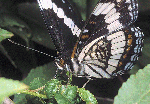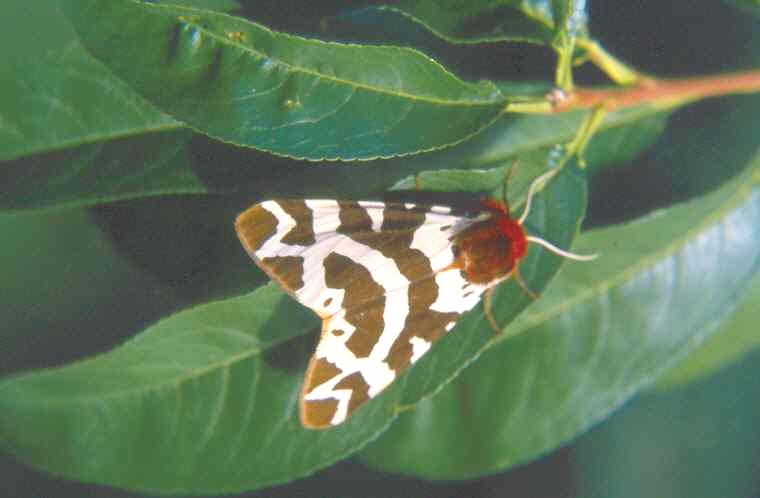
Utah Lepidopterists' Society
Founded 6 Nov 1976

|
|
Utah Lepidopterists' Society Founded 6 Nov 1976 |
|
| History | Mission | Meetings | Bulletin | Checklists | Links | Community | Field Trips | Habitat | Members | Kids | Contact Us |
Thessalia leanira alma
(Leanira Checkerspot)
 |
|
| Adults | Last instar larva. |

|
|
| Example of habitat | Example of hostplant--Castilleja chromosa |
General:
The Type Locality of T. leanira alma is northwestern Mohave County, Arizona; Strecker, 1878. The leanira checkerspot is one of our more attractive checkerspots that flies in many mountainous regions within the state. The leanira checkerspot also has been known to fly along some sagebrush flats where colonies of its hostplant are established. Males, for the most part, hilltop in search of females. Females fly on mountainsides and bottoms in search of its hostplant.
Utah Distribution and Habitat:
Within the state, populations of the leanira checkerspot have been taken in many of its mountainous regions including the Utah Mojave at the vicinity of Castle Cliff in the Beaver Dam Mountains. Populations can also be found along the I-15 corridor near Fillmore, the East Tintic Mountains, the Oquirrh Mountains, the Lake Mountains as well as the Wasatch Mountains near Mona as well as Provo.
The region of the state that seems to contain the largest colonies of alma is in the Basin and Range Province--especially Utah's West Desert in the House Range, Little Drum Mts, the Dugway Range, etc. Colonies within the West Desert seem to be more concentrated on north facing slopes where its hostplant is not as exposed as harshly to direct sunlight during the hot summer months. Leanira is univoltine with its flight period being from early May to June; July at higher elevations in the Wasatch Mountains.
Bionomics:
Post-diapausal larvae of this butterfly have been found on indian paintbrush (Castilleja chromosa). Larvae feed on leaves; but also prefer to feed on flowers. Females oviposit in clutches of approximately 15-25 ova on the underside of host leaves. Pre-diapausal larvae feed gregariously until they diapause at third or fourth instar. When overcrowded with siblings, post-diapausal larvae will sometimes disperse and seek out nearby plants, or re-diapause.
It's interesting to contrast the difference in strategies of the post-diapausal larvae of leanira as compared to anicia. In many areas in the Basin and Range Province, T. leanira alma flies sympatric with Euphydryas anicia wheeleri; both using indian paintbrush as a larval hostplant. But, they do not normally fly synchronically.
The reason for this is that when exposed to identical spring conditions, larvae of E. anicia will break diapause rather quickly by resuming to feed on new leaflets of ground breaking Castilleja. On the other hand, larvae of T. leanira will initiate the breaking of diapause by resting a few days before setting themselves up to moult. After leanira larvae have shed their winter skin, the larvae then start to feed. As a result of this delay, leanira larvae do not usually start feeding until anicia larvae are usually fifth instars, or have pupated--resulting in a main flight of T. leanira alma that is usually 10-14 days after E. anicia wheeleri.

Thessalia leanira alma fifth instar on Castilleja chromosa. (Photo courtesy Wayne Whaley)
All images of Limenitis weidemeyeri on the ULS Info Bar courtesy Jay Cossey